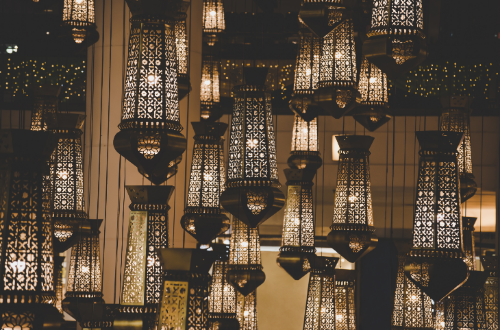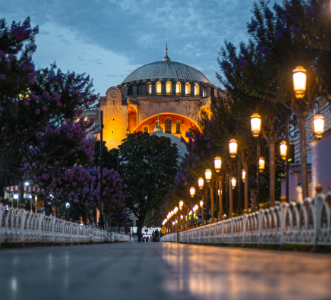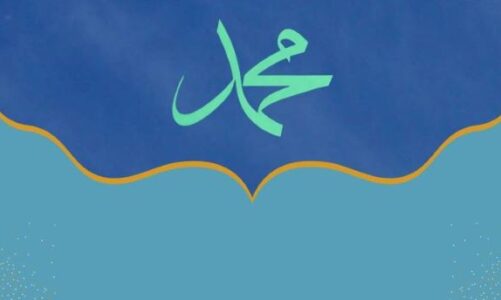For years, like a long-awaited friend, the month of Ramadan approaches. Our noble nation welcomes this season of mercy and forgiveness, where souls are purified, hearts gleam, sins and transgressions diminish, and devils are chained, with beautiful behaviors, customs, and traditions developed over centuries. This anticipation is realized through both spiritual and material preparations. These preparations include distancing from evil, committing to repentance, cleaning homes, preparing mosques and Prayer halls, Quranic and religious study programs, visits, exchanging greetings, strengthening relationships, and planning for charity and almsgiving. The preparations in our country are not unique to us but are beautiful customs stemming from Islam, found in other Muslim countries as well. Below, we will briefly describe how Ramadan is observed in some of these countries.
Ramadan in Medina
The inhabitants of Medina, honored by the migration of the Prophet Muhammad (peace and blessings be upon him), welcome the arrival of Ramadan at all levels. Men, women, and even children express their joy for the upcoming Ramadan. A local from Medina says about the Ramadan preparations: The spiritual and religious significance of Ramadan, namely the observance of fasting, remains vibrant among our people, though societal customs have changed significantly. In the past, families would go to gardens and farms around Medina to spend a few days during the month of Sha’ban. On the night of Bara’at, children would gather, roam the neighborhoods, and announce the night with their chants, receiving gifts in the form of halva, sweets, money, etc. Similarly, on the first and fifteenth nights of Ramadan and on the eve of the Eid, children would sing Ramadan songs. Iftar or sahur would start at the home of the family elder, who would then visit their children’s homes for iftar and sahur. Throughout the month, families would invite each other for meals. The tables would be set with dates, soup, vegetable dishes, kunafa, and fruits. Families would also send dishes they cooked to their neighbors. One of the most notable features of Ramadan in Medina is the iftar tables at the Prophet’s Mosque. People flock to the mosque to pray in congregation and break their fast with fellow believers, racing to invite the arriving congregation to their tables. Then, they perform the Isha and Tarawih Prayers together, with some spending the last ten nights of Ramadan in seclusion at the mosque, engaged in worship and reflection. This tradition continues with full vigor. Children also attend the mosque with their parents, striving to memorize and recite the Qur’an. (Unfortunately, as comfort increases in homes, the practice of these beautiful customs decreases in society.) Especially in the last ten days of Ramadan, the area around the Prophet’s Mosque is crowded with worshippers. Nearby hotels and markets overflow with people. Visitors from around the world come to visit the Prophet’s Mosque, the Sacred Chamber, the Ka’ba, the Masjid al-Qiblatayn, the first mosque where Friday Prayers were held, the martyrs of Uhud, the battle sites of the Trench, and the Seven Mosques, experiencing the golden age of Islam under the guidance of the Prophet Muhammad (peace and blessings be upon him). They also buy dates, especially fresh dates known as rutab, along with Medina’s famous mint and rose petals.
Ramadan in Cairo
One of the first things that come to mind about Ramadan in Cairo is the “Ramadan lantern (fanous).” This term dates back to the era of the first Fatimid Caliph, Al-Muizz li-Din Allah. In 973 AD, on the fifteenth night of Ramadan, as Al-Muizz entered Cairo, the people, men, women, and children, greeted him with a procession, holding torches and lanterns, singing songs, creating an unforgettable scene. Although the procession passed, the tradition of lanterns remained. For centuries, people used these lanterns when going to mosques, especially during Ramadan nights for Tarawih Prayers, and while visiting relatives and friends. Children carrying lanterns would receive tips for their service. The Fatimids, seeking to spread and endear their cause, would also give gifts to the children carrying lanterns, thus popularizing the Ramadan lantern, which became an integral part of Ramadan and rooted deeply in the culture. The lantern was initially used to light the way to mosques in the dark and signal the fasting times. The practice of using lanterns in Egypt, according to tradition, predates the construction of Al-Azhar Mosque by about six years, dating back to 973 AD, over a millennium ago. Another tradition states that during the Fatimid era, streets were specifically illuminated with candles and lanterns during Ramadan. Also, when a religious scholar walked at night, children would light his path with candles, which later were placed inside lanterns. Al-Muizz li-Din Allah had prohibited women from going out at night, except during Ramadan, provided they were accompanied by a child carrying a lantern, serving as a signal for men to make way. Since then, the Ramadan lantern became a significant symbol for Egyptians in welcoming Ramadan. Lanterns would be abundantly produced starting from Sha’ban. The Sayyida Zeinab market would become a lively marketplace for various types of lanterns. Over the years, a variety of lanterns have been used, such as the Ka’ba lantern and the Farouk lantern. The Ramadan fanous continues to be a source of joy and entertainment for children during Ramadan.
Ramadan in Algeria
In Algeria, Muslims prepare for Ramadan with significant attention. The head of the household secures the necessities for the family before Ramadan. On the 29th of Sha’ban, the community makes an effort to sight the crescent moon (ru’yat al-hilal). The government announces the start of Ramadan, extending Ramadan greetings to Muslims. The community also exchanges Ramadan greetings. The most commonly heard phrases among Muslims are invocations like “Ya Karim!” or “Ya Adhim!” Algerians consider Ramadan a revered guest. Housewives, with the care of preparing a bridal chamber, undertake general cleaning in their homes. From a young age, children are accustomed to fasting. The arrival of Ramadan is met with great joy, celebrated with games and Ramadan hymns and songs. Algerians break their fast with dates and milk, then go to mosques to perform the Evening Prayer, followed by dinner at home. At the time of Isha, they go out for Isha and Tarawih Prayers, to attend religious lectures, dhikr circles, and listen to sermons. Young people compete in reciting and completing the Qur’an. The last ten nights of Ramadan, especially the 27th night, are devoted to seeking Laylat al-Qadr with great zeal and worship. The tradition of the Ramadan drum has become less common in recent times. The attention of the wealthy towards the needy noticeably increases during this month. Religious programming on television significantly increases.
Ramadan in Morocco
Morocco also welcomes this blessed month beautifully and lives it in a spirit-filled manner. Adherence to fasting and the prescribed Prayer strengthens love, generosity, and brotherly bonds among the people. Home cleaning, painting, and, if possible, purchasing new items coincide with this celebration. The sighting of the Ramadan crescent is confirmed with 21 cannon shots to welcome this esteemed guest. Especially children climb to their rooftops, expressing their joy with hymns, songs, and tambourines. Upon hearing the announcement, people take to the streets to express their joy and excitement. The most important dish is “harira,” a soup made from water, flour, meat, lentils, chickpeas, and eggs. “Cheerish,” a special local food made from roasted flour, sesame, almonds, and strained honey, is also popular. Haris, couscous, pastilla, and barwit are famous dishes. Tea with mint is used as a beverage.
Ramadan in Senegal
Senegal, a West African country with a population of over ten million, of which 95% are Muslim, welcomed Islam through Moroccan traders. This led to the introduction and spread of Arabic. Beautiful celebrations are organized for Ramadan in this country. Mosques host sessions, talks, study circles, tafsir and hadith lessons, and jurisprudence classes, which attract good interest from people of all ages. Radio and television broadcast special programs around iftar time. Volunteers (town criers) roam the streets at night to revive the night and encourage eating the pre-dawn meal, offering their services without charge. The most commonly consumed foods are rice, meat, olive oil, and fish. Dates are eaten only to break the fast. The community joyfully welcomes Ramadan. Fasting for six days after the 15th of Sha’ban is a widespread practice. Essential food items are secured in advance for the month. The tradition of moon sighting is also observed. Fasting is keenly felt. During the day, restaurants and cafes are completely closed.
Ramadan in South Africa
In South Africa, where Muslims are a minority, welcoming Ramadan is like celebrating a wedding. A Muslim’s daily life during Ramadan is organized as follows: The morning until noon is dedicated to work. After performing the Noon Prayer, religious lessons are attended. The time after the afternoon prayer is spent in the mosque. The evening is spent at home. Immediately after the Tarawih Prayer, people go to sleep. The hot climate makes fasting challenging, but Muslims persist in fasting despite the heat. Other religious communities do not show hostility towards Muslims; instead, they respect the fast and refrain from eating or drinking in their presence. Mosques are filled with young people praying and reciting the Qur’an. On Eid day, Muslims go to the Eid Prayer ground. Dressed in their finest, they observe the Prayer and then exchange greetings. Homes are prepared to welcome visitors, who are offered sweets and fruits. After lunch, women, except for the mother, go out for visits while the mother stays home to receive guests.
Ramadan in India
India, with a population of 750 million, approximately a quarter of whom are Muslims, sees mosques illuminated, cleaned, and their displays refreshed during Ramadan. Even non-Muslims assist Muslims in these tasks. Muslims climb to high and suitable places to sight the crescent moon. Once sighted, a special committee of scholars discusses and announces the start of Ramadan through radio and TV. Six cannon shots announce Ramadan, and both iftar and pre-dawn meals are signaled by three cannon shots on other days. Radio broadcasts iftar and pre-dawn meal times for each city continuously. The government provides a notable telephone service: anyone calling a special number can learn the iftar and pre-dawn meal times. Indian mosques are filled, and Tarawih prayers light them up. There are many Qur’an reciters. Some imams complete the Qur’an in three, five, or six days during Tarawih Prayers. Women also attend Tarawih prayers in many suitable mosques. Hindus visit Muslim restaurants for meat dishes since Hindu restaurants do not cook meat. Out of respect for Muslim religious sentiments, Hindu restaurants cover their displays with curtains during Ramadan. The tradition of seclusion in mosques during the last ten days is widespread. After completing the Qur’an in mosques, it is customary to offer sweets to the congregation. Special committees are formed in every town to sight the Eid crescent. Special attention is given to the last Friday. The government provides special buses for Muslims to attend Friday and Eid Prayers. Let’s also remember the Ramadan of non-Muslims who fast for 17 hours in regions where they are numerous.




